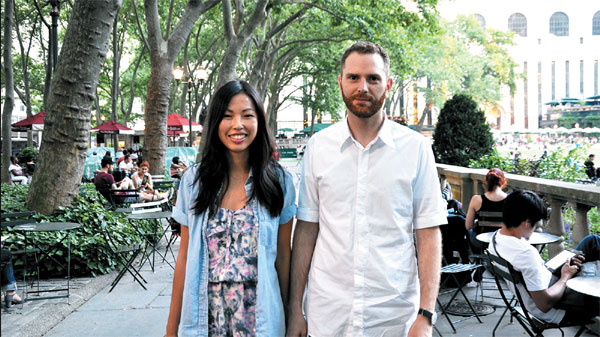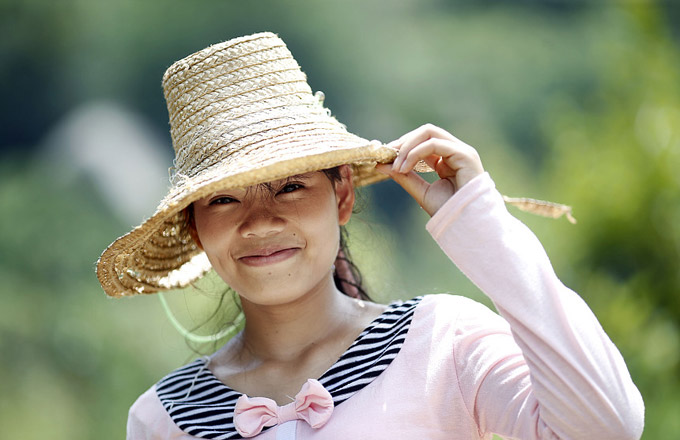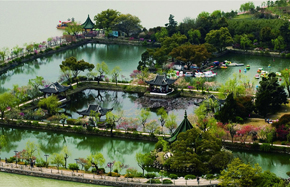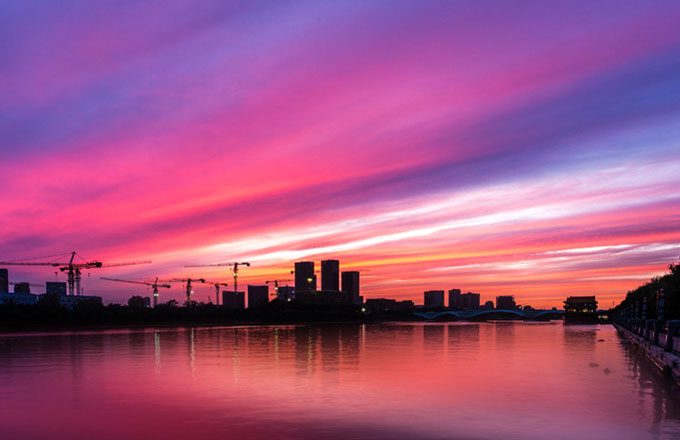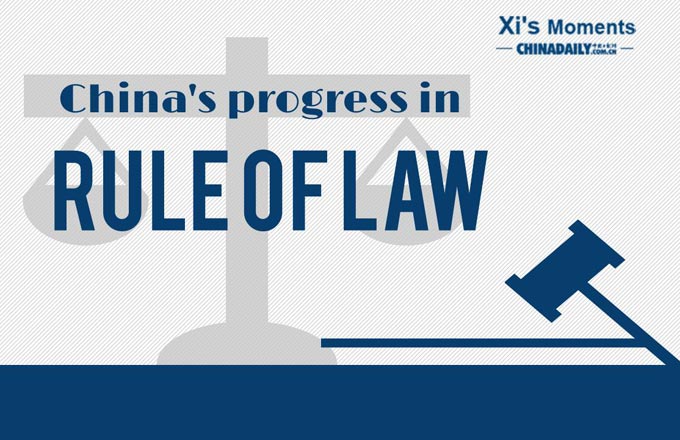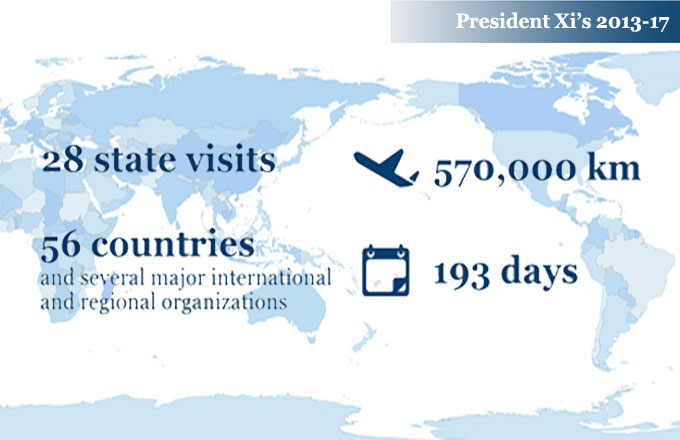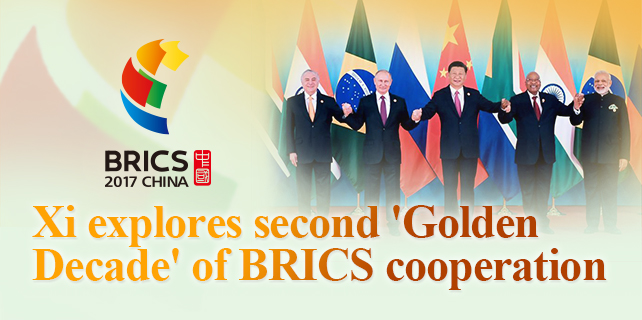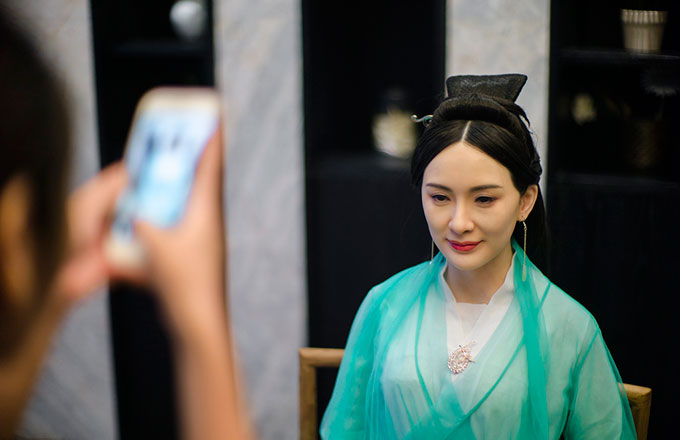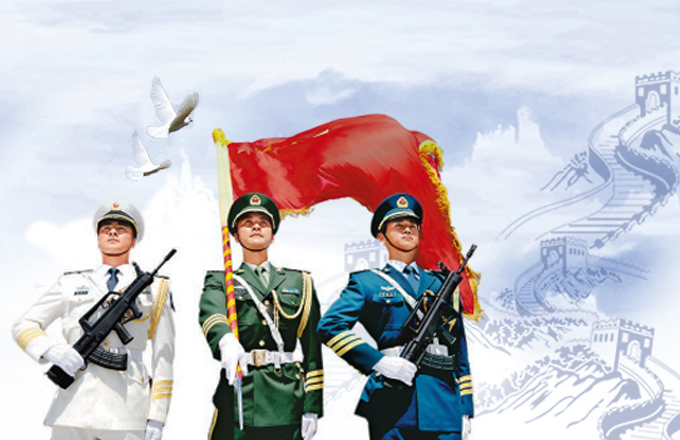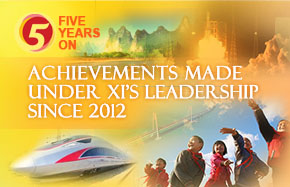Changing times: interracial marriages
|
Barbara Nguyen and James Willeford say they have faced minimal resistance for their interracial relationship in New York, but believe that attitudes are different outside major metropolitan cities. Kelly Chung Dawson / China Daily |
Attitudes toward mixed marriages in the US are less of a barrier today, but those in such marriages or partnerships often tell a different story, reports Kelly Chung Dawson from New York.
When PBS recently aired Seeking Asian Female, a documentary about a "mail-order" marriage initiated on the Internet between a middle-aged Caucasian man and a young Chinese mainland woman, the resulting media coverage sparked a heated online debate among critics and viewers about sexual fetishes, racial power dynamics, and what the motivations behind a pairing might be.
Several critiques of the film quoted Goal Auzeen Saedi, a post-doctoral fellow in counseling at Stanford University, who believes that such pairings send an "underlying message about power, dominance and white privilege".
There were more than 4.5 million interracial couples in the US in 2011, according to the 2010 Census data. Asian Americans marry outside their race at a higher rate than almost every other ethnicity, with 28 percent of Asian American newlyweds choosing a non-Asian partner in 2010. The number of unmarried interracial couples is difficult to track, but demographers believe it would likely reflect similar trends.
Attitudes toward interracial marriages are less of a barrier today than ever before, with a 2011 Gallup Poll estimating that 86 percent of Americans support interracial marriage at least in theory, up from 20 percent in 1968. Members of interracial marriages or partnerships often tell a different story, though.
Steven Bolstad, the man whose marriage was showcased in Seeking Asian Female, addressed the assumptions he felt had been made about his relationship in an interview with China Daily.
"I wasn't interested in power," he said. "I was simply looking for a human being. The assumption that I was rescuing a slave from a rice paddy is offensive, and reveals that many people in the US still look at China as being filled with peasants in mud huts. The reality is that every relationship is different."
Director Debbie Lum admitted that as someone who had been pursued aggressively by white men in her own dating life she went into filming with some pre-conceived notions about the nature of their relationship. The film is as much about the couple's story as it is Lum's own process of coming to see them as more than the sum of their stereotypes. In the end, she rooted for the success of the marriage, she said. Steven and Sandy have been married for four years.
Asian women
Pairings between Asian women and Caucasian men are twice as common as matches between Caucasian women and Asian men, a gap that has often been attributed to the hypersexualization of Asian women and the emasculation of Asian men in US pop culture. The nuances and repercussions of that discussion extend farther than the way in which Caucasians view Asians, with many Asian Americans citing those same stereotypes as having shaped their own sexual preferences and the confidence in which they pursue or don't pursue partners of other races.
The history of interracial marriage in the US has long been complicated. Anti-miscegenation laws barring interracial marriage were first introduced in the US in the 1600s to prevent the illegitimate mixed race children of slaves from inheriting property from their white fathers. When the building of the transcontinental railroad attracted an influx of male Chinese immigrants who left their families in China in the late 1800s, those laws were amended to include Chinese and other Asian ethnicities.
Later, World War II sparked a wave of "war bride" marriages, in which thousands of women from China, Japan and other Asian countries arrived in the US to join white partners. Even so, interracial marriage remained illegal in 38 states until 1967, when the US Supreme Court ruled that anti-miscegenation laws were unconstitutional.
Long-standing stereotypes and assumptions continue to create barriers and complications for interracial couples, even as a growing Asian American population and a resurgence in heritage pride movements have led to an uptick in Asians marrying other Asians, according to C.N. Le, director of the Asian and Asian American studies certificate program in the sociology department at the University of Massachusetts, Amherst.
In 1980, Asian Americans were marrying foreign-born Asians at a rate of 7 percent; by 2008, that percentage had jumped to 21. Conversely, between 2008 and 2010, interracial marriage between Asian Americans and non-Asians dipped nearly 10 percent, according to the Pew Research Center.
In a 2012 Huffington Post article titled So, he likes you because you're Asian, Vivienne Chen, a freelance writer studying gender and sexuality issues at Princeton University, argued that the "Asian fetish" generalization actually reinforces the predominant narrative about Asian women being inherently powerless. Additionally, Asian women have been quick to label such men as perverse when their own preferences for white men have made the pairings possible in the first place, she wrote.
She cited a study conducted by the dating site Coffee Meets Bagel, in which data showed that of those who specified a racial preference in potential partners, 7 percent of white men indicated Asian. Among women who specified a racial preference, the majority of Asian women picked men of the same race but 34 percent indicated a preference for Caucasian men. The numbers would seem to indicate that dating patterns between interracial couples in which the woman is Asian are most often dictated by female preference.
Barbara Nguyen, a public relations representative whose fiance is of Caucasian and Guatemalan heritage, has mostly dated Caucasian men, she said. She has been drawn to well-educated, creative leaning men from suburban backgrounds, and the type of men who have fit into those categories have generally been white, she said.
"I think that subconsciously, through my love of cheesy romantic movies growing up, I came to think that the ideal was an attractive white guy," she said. "I think that without even knowing it, the cultural standards set by media and pop culture probably informed my romantic tastes."
Cultural differences
James Willeford, a landscape architect and Nguyen's fiance, said living in New York City has made the racial makeup of their relationship less noteworthy.
"Even so, I'm definitely aware of the relationship stereotype of the white male and Asian female, and at times I've been self-conscious of whether people think that's what's going on between us," he said. "Occasionally people have made jokes about it, but fortunately for the most part no one's really raised the issue."
Jenn Fang, who runs the Asian American issues blog Reappropriate.co, takes issue with Chen's citation of the Coffee Meets Bagel study. That Asian women also choose partners based on race is equally offensive, she said in response to Chen's piece.
"Defending Asian fetishism makes a damaging impact on a debate that has been going on for many years," Fang said. "It is not okay for a person of color to be objectified based on their race in any context. It's dehumanizing, and it means you're making generalizations about what kind of partner a person will be based on the color of their skin."
Chen said that she does make a distinction between the experience of Asian American females and Asian females living in Asia or newly living in the US.
For interracial relationships initiated in developing countries, there are often greater socioeconomic and cultural differences. However, she said that she believes that the economic rise of Asian countries will inevitably change the way people view Asian-White pairings, as fewer assumptions are made about the interplay of power between cultures.
"It does a disservice to China's history to suggest that Chinese or Asian people are fundamentally in a state of disempowerment when dealing with the Western world," she said.
Fang refutes the idea that Asian American females are immune to that imbalance. The historical context of colonialism and an imbalance of power in Asia relative to the West apply whether a relationship takes place in Asia or the US, she said.
Fang, whose partner of 14 years is African American, said that her response to Chen's article is in part shaped by her own experience with interracial dating.
When she first began dating her partner, she faced vitriol from Asian American men who argued that she couldn't effectively advocate for Asian American issues if she dated outside the community, a choice they saw as evidence of her internalization of racist stereotypes about Asian men.
The backlash revealed an undercurrent of bitterness among Asian men about the way in which they are viewed by American society at large, she said. Both Asian men and women are seen as "the sexual other," and an awareness of that shapes self-identity from adolescence, she said. For men, this can be particularly damaging.
In a much-discussed 2011 article for New York Magazine titled Paper Tigers, Wes Yang argued that Asian men face difficult and often downplayed barriers in proving their masculinity. Dating consultants like The Asian Playboy have made fortunes teaching Asian men how to "score" with white women, imparting expensive advice about how best to convey the kind of confidence that non-Asian women are believed to value.
Non-Asian women
Paul Wong, a professional cook of Chinese and Thai descent living in Los Angeles, dates non-Asian women as a rejection of the all-Asian community he grew up in, he said.
"The reason I do it is because I don't exactly embrace being Asian," he said. "The truth is that I don't want to be my parents, and the easiest way to do that is to make sure my children are of mixed background."
He said that the reaction from observers is always admiring when he steps out with a non-Asian romantic partner. On one outing to an Asian market with a much taller Caucasian woman (he is 5'2" and prefers to date women who are at least 5'6"), he received high-fives from two men on the street for his supposed accomplishment, he recalls.
John Vigil, a New Mexico-based computer consultant who is of Asian and Hispanic descent, echoed Wong's rejection of the Asian aesthetic as "too familiar".
"I don't want to be with my mom or sister, so subconsciously it makes me not as attracted to Asian women," he said. "I aim for partners who are as different from my family members as possible."
Wong joked that his automatic visual association of Asian women with his family members is because "all Asian women look alike, right?" He has canceled dates with potential partners whose hair (long, straight, black), face shape or body type were too similar to his female family members, he said. Part of his rejection of the Asian identity is in fact a response to the Asian community's own rejection of the outside world, he noted.
Insular culture
The strongest resistance Asian Americans encounter against interracial marriages often comes from within Asian families, said Diane Farr, an actress who has starred on hit TV shows including Numb3rs and Private Practice. Farr, who is Caucasian, wrote a book called Kissing Outside the Lines, recounting her difficulties in convincing her now-husband's Korean family to accept their interracial marriage.
"I had no idea how insular Asian culture would prefer for the community to remain until I became involved with an Asian man," she said. "I believe that this will be the hardest and last thing Asian culture in the US will confront."
That many Americans are putting off marriage until an older age does alleviate some of the influence that family can have on determining who a person chooses to marry, said C.N. Le of the University of Massachusetts' sociology department.
However, because Asian Americans in interracial marriages generally prefer to partner with non-Asians of equal or higher education and income levels, ingrained beliefs about non-white communities continue to play a significant role in shaping family resistance toward interracial pairings between Asian and African American or Hispanic partners.
Wong's experience has reflected that truth, he said.
"A majority of my extended family, and my parents, show varying degrees of discomfort about the fact that I prefer to date non-Asian women, and their discomfort grows with the darkness of my dates' skin tones," he said.
For people hoping to make a life with someone of a different race, the process can be difficult but not insurmountable, Farr said.
"Remember that you're never going to change anyone else's opinion of your relationship with a perfectly worded speech," she said. "The only way to change people's opinions about race is to keep living your life and relationship the way you want to live it. At 25 I might have pointed fingers and told my husband's family about their ignorance, but at 35 I saw fear - fear that their cultural values and traditions wouldn't be taught, but I just kept showing up. Over time I became Diane, rather than just a white person, and they accepted me."
Contact the writer at kdawson@chinadailyusa.com




